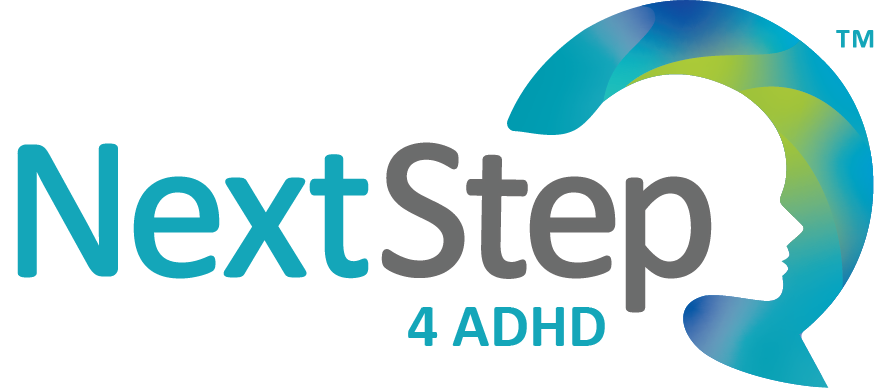
10 Study Tips for Children and Teens with ADHD
Whether your children are returning to in-person learning, e-learning, homeschooling, or a hybrid combination, there’s one thing that remains constant: homework. And study tips for ADHD can make all the difference for children and teens with ADHD.
In this article, we’ll cover 10 study tips for ADHD to make your child’s study time and homework time more productive — and more peaceful.
1. Create a “Study Only” Space
Distractions are one of the biggest road blocks when it comes to homework. Toys, TV, and even siblings who want to play can hinder study time. Children with ADHD are more likely to be distracted by their surroundings. The key is to create a “study only” space to help limit distractions. Trying to study in the family room while a sibling is playing or watching TV can be a big temptation.
Instead, create a comfortable place where your child can work with few distractions. Use this as a quiet place to work far away from noise and movement. Your child can clear his or her mind and focus on the tasks at hand.
Study spaces can include a quiet living room, the dining room table, or even the den (as long as the TV is off!).
Don’t do homework in the bedroom. The bedroom is a place for sleep and relaxation — not school work and stress.
Study Tip
2. Make a Study/Homework Schedule
Most children thrive with consistency. And for children with ADHD, it’s even more essential to have a consistent routine. Adding a dedicated study/homework time to your child’s after school schedule helps to start his or her focus. Set a time each day for your child to study, whether he’s e-learning, in-person learning, or homeschooling. This is one of the best study tips for ADHD!
3. Add Breaks to Your Schedule
ADHD can make it hard to focus, especially if your child is studying a subject that’s not-so-interesting to him. Breaks are a must to help maintain focus and avoid burnout. Add a break time and encourage your child to eat a snack or even go for a quick walk with you. This quick little break allows the mind reset! Bonus: if you choose to move around for the break, it will help burn off extra energy.
4. Fuel Up
We just covered the importance of adding a break to a long study session. Now we’re going to discuss the importance of starting the study session already fueled up and ready to go. If your child is hungry, he’s less likely to have a good study session. Healthy, nutrient-dense snacks are the best brain fuel.
Choose healthy foods that won’t crash his or her blood sugar. Certified Health Coach Pam Valdes suggests, “A combo of protein and complex carb (fiber-rich) snacks fuel energy and help stabilize blood sugar levels. For this reason, fruit and nut combinations work really well, such as apple & peanut butter, grapes & pecans, orange & almonds, pear & walnuts.”
5. Organize the Homework Station
Study tip #5 is all about organization. When you create a homework station for your child, organization is key to his or her success. Organize school supplies with:
- Colored folders or binders
- Colored notebooks or dividers
- Colorful labels
- Pencil case or pencil/pen caddy
However you decide to organize the station, it’s important that everything has a proper place. When everything — whether that’s a pencil or a notebook — has a place, your child spends more time studying and less time looking for lost pencils or books. This includes having a spot to hang up your child’s backpack.
6. Encourage and Support Your Child
A positive, supportive environment is a crucial ingredient to your child’s study area. Encourage your child to always try his or her best, and this is one study tip that can go far. When your child feels encouraged and supported, he’s more likely to see study time as a positive thing. If your child struggles, it’s okay to offer age appropriate help. Encourage your child look at challenges in a positive light to keep him or her motivated and develop a growth mindset.
Here are eight phrases that you can use to inspire and encourage your child:
- I can see you’re really trying!
- Keep on trying!
- You almost got it!
- I can see you tried hard.
- I appreciate your hard work on this project.
- How do you feel about that?
- I’m glad you enjoy learning!
- I’ll bet you knew you could do it!
If your child is struggling, don’t hesitate to stay in contact with your child’s teacher. When you know what’s going on in the classroom, it’s easy to spot red flags when they arise.
7. Understand Your Child’s Learning Style
Did you know that there are several different learning styles? Auditory, visual, or even kinesthetic — they are all valid and common ways of learning. Change studying habits to fit his or her learning style. For example, if your child is a kinesthetic learner, you can encourage the use of models or physical touch. You might also encourage your child to write down the facts he is trying to memorize. Use a finger to physically touch the items he is counting. According to Houghton College, movement can also help increase focus and attention while studying. This includes:
- Chewing gum
- Tapping a pencil
- Pacing (perhaps while you orally quiz your child on their test materials)
On the other hand, a visual learner may do better reading his or her own notes from class rather than an oral review.
The bottom line: Every child learns differently. Studying in a way that works for him or her can help improve both understanding and retention.
8. Know When It’s Time to End a Study Session
Children with ADHD can become easily frustrated or struggle to manage emotions. Encourage your child to keep going, but don’t push your child too much. If he or she has hit his or her limit, it’s okay to end a study session.
Praise your child after he or she finishes his or her homework or completes a study session, but remember to praise progress and effort.
9. Teach Your Child New Study Skills
Take each study session to the next level by teaching your child new study skills. A few examples of study skills include: mnemonic devices, effective reading, practicing concentration techniques, and efficient note-taking.
If your child is e-learning, there may be an adjustment as he or she learns to take notes via online classes. Be sure your child has plenty of notebooks, highlighters, and other tools for good note-taking.
10. Need More Than Just Study Tips for ADHD? Get Help If Your Child Needs It
Are you searching for actionable strategies to help your child with ADHD study better? In addition to practicing these study tips and strategies, your child may benefit from professional care. Here at Next Step 4 ADHD, we take multidisciplinary and holistic approach to your child’s ADHD treatment. Dr. Kristi Briscoe is a board-certified pediatrician specializing in effective medication management, parent coaching, and proven strategies to motivate and encourage children with ADHD.
We also offer coaching and therapy. You can see our multidisciplinary team of compassionate and expert providers here.
To make an appointment, call us at 502-907-5908. You can also request an appointment here.
Learn More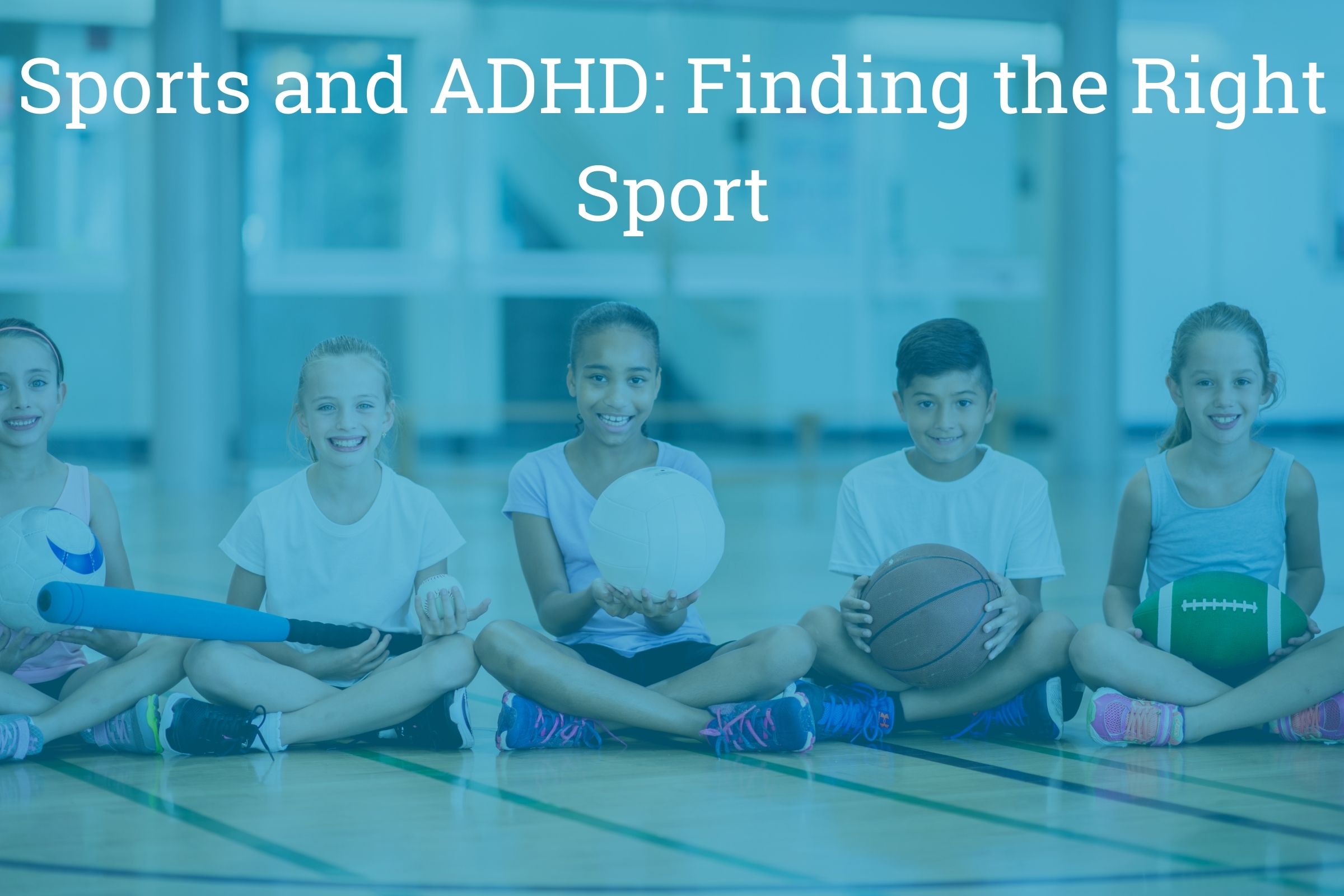
Choosing the Best Sports for Kids with ADHD
Physical exercise is good for the physical and emotional health of all children, but exercise can be even more important for kids with ADHD — and sports are a great way to make sure exercise is in their daily schedule. Exercise can provide children physical exercise, a chance to develop social skills, a chance to boost self-esteem, and practice listening to directions and working as a team. But do all sports offer the same level of benefit for children with ADHD?
A common condition, ADHD affects more than 19% of children in Kentucky (11% overall in the nation), according to the Centers for Disease Control and Prevention. The three main symptoms of ADHD are impulsivity, inattention, and hyperactivity. Some children may struggle more with the inattentive symptoms, while others struggle more with the hyperactivate symptoms. Some children experience both inattention and hyperactivity.
While any physical activity is good for children, knowing which type of ADHD your child has can help you find the right sport for your child. For example, children with a lot of energy may favor more active sports. In other words, depending on the severity of your child’s symptoms, he or she may find some sports more enjoyable than others.
Two factors that may influence your child’s decision include:
- Coaching dynamic
- The pace of the sport
1. Coaching dynamic
If your child struggles with inattention, a sport with strong 1:1 coaching may be beneficial. This allows for a direct interaction between the coach and your child. One-on-one instruction creates less distraction because the coaching/instruction is directly aimed at your child.
Sports with more of a focus on individualized coaching includes:
- Cross country
- Track and field
- Wrestling
- Martial arts, including Tae Kwon Do
- Swimming
- Dance
- Gymnastics
2. Pace
While individual sports and 1:1 coaching has benefits, group sports also hold their own benefits for children with ADHD. Team sport with a quick pace can be a great outlet to release energy.
Fast-paced sports include:
- Basketball
- Hockey (both ice hockey and skating)
- Soccer
- Basketball
These sports are not idle, and they do allow for constant motion. Less idle time on the field means less chance for distractions.
Benefits of Exercise for Kids with ADHD
Whether your child is getting ready for soccer, basketball, or swimming, he or she will reap many benefits of participating in a sport. The benefits of exercise for kids with ADHD include:
- Reduced stress and anxiety
- Improved impulse control
- Reduced compulsive behavior.
- Boosted working memory.
- Improved executive function skills
- Opportunity to practice social skills and build interpersonal skills
What If Exercise Alone Isn’t Enough to Manage Hyperactivity
Organized sports can help your child feel confident and manage high energy levels, but it’s not always enough to manage ADHD symptoms. In addition to physical activity, there are other strategies for managing ADHD, including:
- Eating well-balanced meals
- Practicing good sleep hygiene
- Attending therapy
- Medication
Not sure where to start? Our multidisciplinary team can help you through therapy (for your child as well as parenting coaching), medication, and guidance with lifestyle modifications. Book your appointment here and get started with your next steps today.
Learn More
How Therapy Helps Treat ADHD in Kids
Although ADHD medication can help reduce the symptoms of ADHD, medication isn’t the only treatment option. In fact, ADHD responds quite well to lifestyle modifications and therapy. Our team of expert providers excel at multidisciplinary ADHD treatment programs, which can include medication, coaching, lifestyle modifications, and CBT for kids.
But if you’re considering ADHD treatment for your child, you might wonder how therapy affects ADHD. That’s just the question we tackle in this blog: what is CBT and how does therapy help kids with ADHD.
What Is CBT Therapy?
CBT is short for cognitive behavioral therapy. Cognitive Behavioral Therapy is a type of psychological treatment used to treat a variety of mental health disorders including anxiety, PTSD, and ADHD. CBT is based on three principles:
- That psychological problems are based in faulty thinking
- That unhelpful thought patterns impact your behaviors
- That you can learn better thought patterns to change your behaviors
In other words: CBT is a type of goal-oriented psychotherapy that aims to change negative patterns of thinking and change the way a child feels about his/her self, as well as his/her abilities. As an ADHD therapy, your child will learn to identify negative thought patterns and learn to regulate behavior.
Watch the following video to learn more about CBT:
CBT for ADHD in Kids
What types of thought patterns and behaviors can CBT help with? For both adults and children, time management, organization, motivation, and emotional regulation can be trouble spots. Difficulty with time management, emotion regulation, and task initiation can lead to:
- Low self-esteem
- High stress levels
- Feeling defeated
- Negative self-talk
Therapy for kids with ADHD provides the space for your child to work past his or her struggles — and see how ADHD influences those thoughts and behaviors. During each session, your child works with his or her therapist to explore the thoughts, emotions, and behaviors during difficult situations. Your child has the opportunity to explore other ways in which the situation could have been handled.
Your child also builds coping techniques to help avoid repeating the same situation of the future.
Let’s recap! CBT can help children with ADHD by helping your child learn to:
- Manage negative emotions
- Stop negative expectations
- Identify negative behavioral patterns
- Cope with stress
- Handle transitions throughout the day better
- Identify self-defeating behaviors
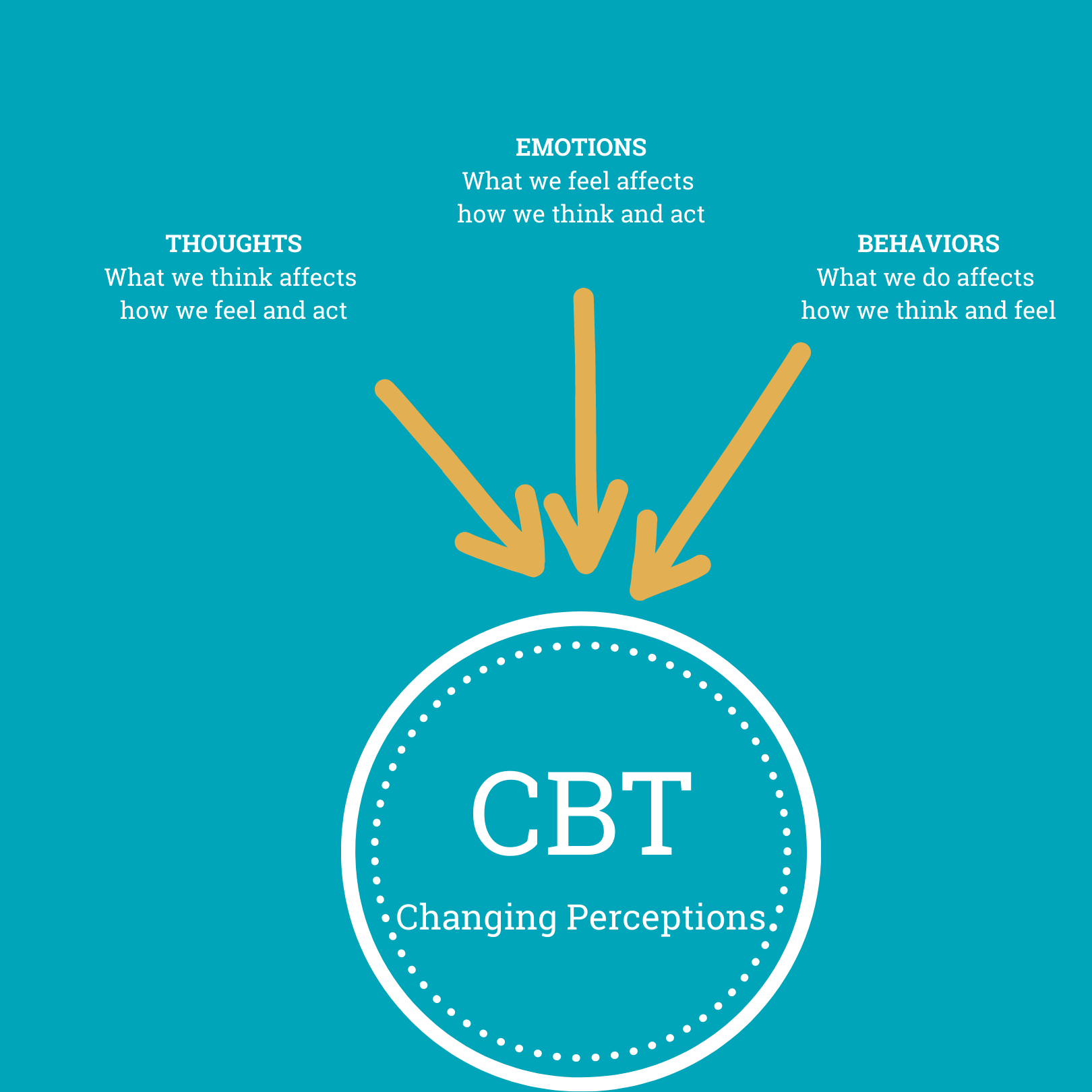
CBT Helps Children with ADHD in Another Way…
If your child has co-occurring disorders — such as anxiety or depression — CBT can also help your child manage those mental health conditions as well.
Not sure if your child is dealing with ADHD or anxiety — or both? You can learn more about anxiety and ADHD in this blog post. Our team excels at diagnosing and treating co-occurring disorders, so don’t hesitate to reach out to us to schedule a psychological evaluation.
For children with ADHD, psychotherapy enables your whole family to create beneficial strategies that reward positive behaviors. Here at Next Step 4 ADHD, we are a multidisciplinary practice, and our team of experts excels at treating ADHD and anxiety in children. If your child is struggling with ADHD — or any other mental health condition — we can help. Book your appointment here and get started with your next steps today.
Learn More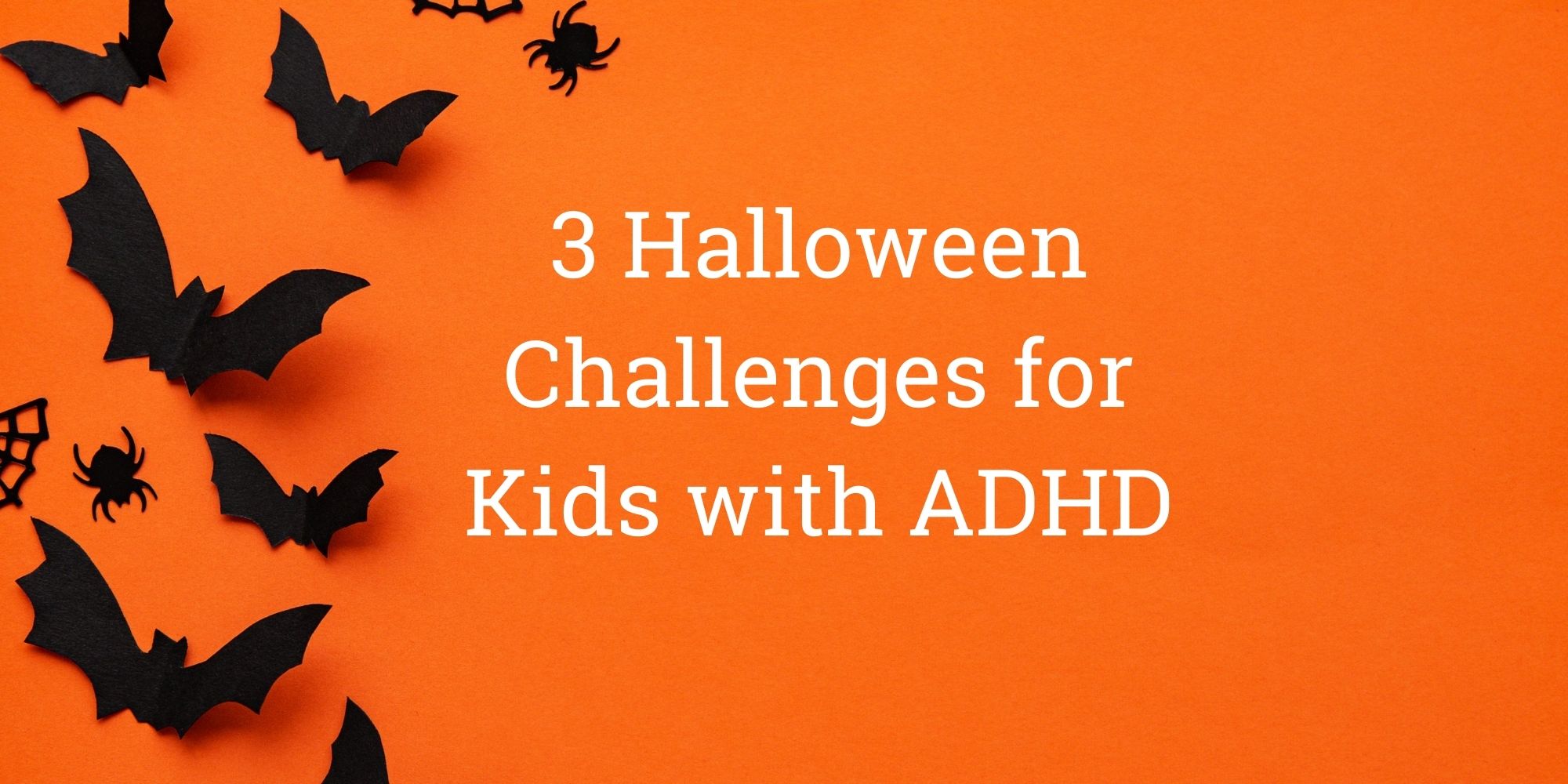
3 Halloween Challenges for Children with ADHD
Halloween is right around the corner, and for many kids, it’s one of the most exciting days of the year. There’s costumes, candy, spooky decorations, Halloween parties, trick-or-treating, and a whole lot of fun. Unfortunately, Halloween presents a few challenges for children with ADHD.
Below, our team of ADHD experts explores these challenges and provide tips for overcoming them so that your child can experience a fun — and safe — Halloween.
1. Adhering to Safety Rules
Halloween, despite all of the fun, is one of the most dangerous days of the year for children. US News reports highlight that the list of dangers including:
- Tripping over ill-fitting costumes
- Visual impairments due to masks or wigs
- Dangers when crossing the street
Children with ADHD may run from house to house and pay little attention to the cars driving in the road. The combination of excitement and inattention can lead to children getting separated from their trick-or-treating group.
What You Can Do
There are many things you can do to help promote safety on Halloween. Here are just a few ideas:
- Discuss all safety rules with your child before even leaving the house (your child may be too excited to fully take in your message if you start this conversation once you’ve started trick-or-treating.)
- Talk about stranger safety.
- Ensure that your child can see through his/her mask and that the costume won’t pose a tripping hazard.
- Review the trick-or-treating map with your child.
- Create a safety plan in the event that your child is separated from you.
- Give your child glow sticks or reflective arm band for increased safety when crossing the streets at night.
- Review proper street crossing rules.
2. Eating Too Much Candy
While candy doesn’t cause ADHD, consuming high levels of sugar (and generally following poor dietary habits) can exacerbate symptoms of ADHD. For children who struggle with impulse control, it can be even harder to resist the temptation of candy.
What You Can Do
Many parents have adopted creative solutions for dealing with all.of.the.candy on Halloween. Here are a few ideas:
- Allow your child to trick-or-treat and enjoy the fun tradition, but when they return home, allow them to trade in their bag of candy for non-candy treats, such as race cars, books, dolls, bouncy balls, or some other goodie they’ve had their eye on. You can then donate the candy.
- Create a candy calendar, marking out how many pieces your child can have each day.
- Limit the number of houses you visit to reduce the amount of candy you bring home.
Regardless of how many pieces of candy your child enjoys, be sure to focus on other healthy foods throughout the rest of the day.
3. Calming Down at Bedtime
Winding down for bedtime after a fun-filled Halloween can be tricky. Because children with ADHD may struggle to regulate their emotions, you may see an uptick in temper tantrums, especially if your child is upset that Halloween is over.
What You Can Do
Thankfully, there are many ways you can make bedtime calmer on Halloween. Here are a few ideas.
- Be sure that you’re implementing good sleep hygiene practices
- Create a special bedtime routine just for Halloween e.g., reading a special Halloween book or wearing themed pajamas
- Allow extra time for your bedtime routine on Halloween
- Let your child know their schedule for the day so they have time to prepare mentally
- Give more frequent reminders when shifting activities
- Follow these tips for making Halloween more ADHD-friendly
Need Help Managing Your Child’s ADHD?
Here at Next Step 4 ADHD, we are a multidisciplinary practice, and our team of experts excels at diagnosing and treating ADHD in children. If your child is struggling with ADHD, we can help. Book your appointment here and get started with your next steps today.
Learn More
What’s the Link Between ADHD and Bedwetting?
Question: My son has had frequent accidents, but we could never could figure out why. The UTI tests always came back clear. Can ADHD contribute to bedwetting and accidents?
Bedwetting can be a struggle for many parents, but it can be even more of an issue for parents of children with ADHD.
Why?
There’s a link between accidents and ADHD. In fact, the rate of accidents is almost 3x higher in children with ADHD than in children without ADHD.
What’s the Link Between ADHD and Bedwetting?
About 20% of children have accidents, but that number is 2.7 times higher in children with ADHD, according to research. There are many reasons to explain this connection.
- Poor Impulse Control: Children with ADHD may simply miss their body’s cues telling them their bladder is full. This can lead to the sudden urge to go, and if a child waits too long, an accident is more likely to happen.
- Changes in Sleep: Changes to your child’s sleep routines may also keep his/her body from releases antidiuretic hormones. (You can learn more about good sleep tips here.)
- Increased Stress on Your Child’s Bladder Stress: If your child is constantly in the “go go go” mode, it can put stress on his/her bladder, which can increase the risk of accidents. Also, stimulant ADHD medications can add even more stress on the bladder.
- Behavioral Differences: Children with ADHD may struggle to read their normal bodily cues and stick with routines.
When Will the Bedwetting End?
Although it’s impossible to answer this question with a definitive answer, the reality is that most children grow out of bedwetting. As children learn to read their bodily cues, bathroom time becomes easier and easier.
Here are a few things you can do to help your child:
- Schedule regular bathroom breaks throughout the day (this encourages your child to check in with his or her bodily cues)
- Encourage your child to use the restroom right before bed
- Avoid drinking large amounts of water or milk right before bed
- Take regular breaks from playtime to use the restroom
When to Seek Medical Care for Bedwetting
Sometimes accidents can be a sign of an underlying medical problem, such as a urinary tract infection. If you have concerns about your child’s bedwetting, it’s a good idea to check in with his or her pediatrician.
Regardless of what’s contributing to your child’s accidents, remember that having an accident can be very frustrating and embarrassing for a child. Support your child and reassure him/her that it’s not their fault. Encourage them, let them know you’re there, and that the bedwetting will get better over time.
All of Your ADHD Needs Under One Roof
Learning as much as you can about the developmental aspects of ADHD makes it easier for you to understand and support your child, whether they are dealing with accidents or another issue. You may also find that anxiety can contribute to and exacerbate ADHD, which can then make bedwetting worse.
Here at Next Step 4 ADHD, we are a multidisciplinary practice, and our team of experts excels at treating ADHD and anxiety in children. If your child is struggling with ADHD and/or anxiety, we can help. Book your appointment here and get started with your next steps today.
Learn More
When Homework Troubles Indicate It’s Time for Cognitive and Psychological Testing
If you’re the parent of a child who attends school — either in-person or virtually — you’re probably already used to the flurry of activities that they go through every day. There are new friends whose names you need to remember, appointments with teachers, and of course, there’s all of the homework that needs to be done.
When it comes to homework time with your kids, it can be either incredibly rewarding or incredibly frustrating. You feel rewarded when you’re sitting and figuring something out with your child, and then you finally understand a concept or problem that they’re working on.
But then there come the times when you can feel frustrated because your child feels frustrated as well. These are the times when it seems that they have difficulty paying attention. Sometimes even just starting homework seems impossible.
Why Is Homework So Hard?
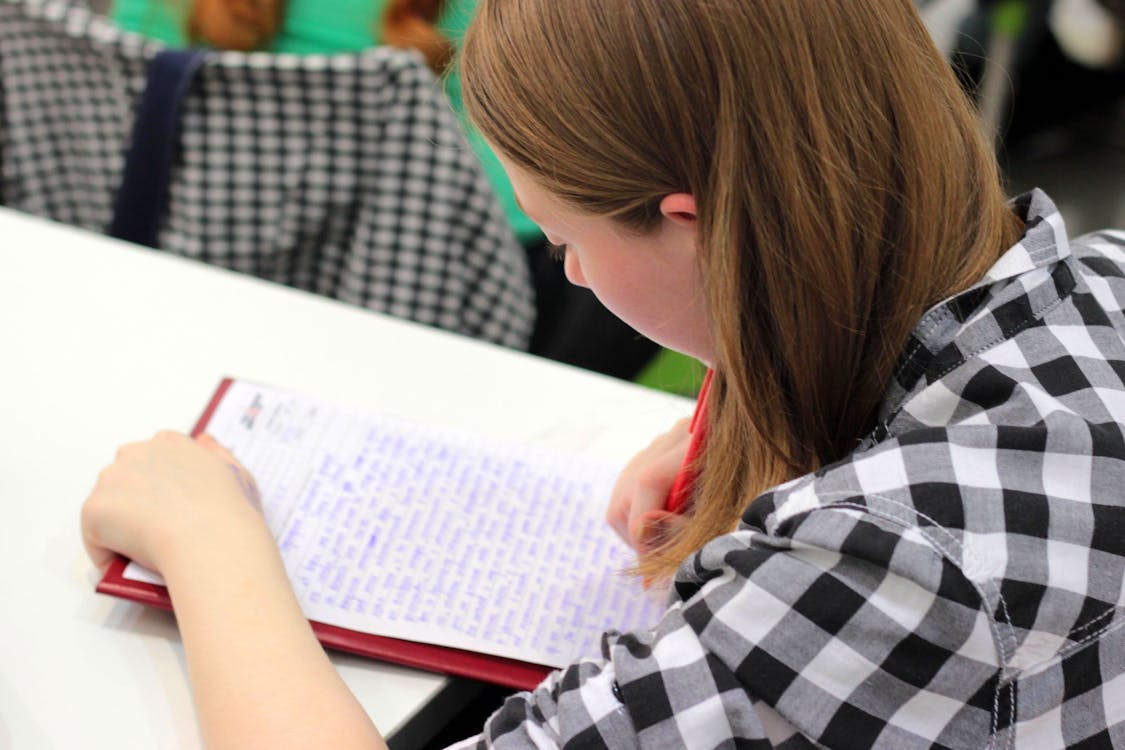
If you feel like your child gets frustrated with his homework or schoolwork often and you wonder why, two common disorders might be contributing: The first is attention deficit hyperactivity disorder or ADHD. The second is a learning disability.
ADHD and Homework
Signs of ADHD in a child may include difficulty sitting still, getting started, staying organized, or sustaining their focus/attention for extended periods of time. They might have significant difficulty engaging in doing their homework, or start it only to abandoned it midway.
Learning Disorders and Homework
A learning disorder, on the other hand, is usually focused on a single area rather than everything at once. Your child may have difficulty in one specific area of academics, even though they are good at other areas. For example, your child does well in math but at the same time struggles with reading words. Or it can be that your child can read well but specifically has problems with spelling the words or writing them.
If you think your child has any of these symptoms and has difficulty in school and with homework there are easy methods to find out what exactly they’re having problems with. Sometimes ADHD is the cause; sometimes learning disorders are the cause. And sometimes a child has both ADHD and a learning disorder.
The Role of Cognitive Assessments and Psychological Tests
At Next Step, we are equipped to give you helpful cognitive assessments and reliable psychological tests to identify your child’s strengths, weaknesses, and growth areas. These psychological tests are designed especially for children, and can give a complete picture of their learning processes and intellectual and academic functioning.
Such tests can provide extremely useful information that can help guide teachers and parents in their work with children, serve as a guide for interventions and needed accommodations, and greatly increase your child’s chances for success in life.
Remember, you can learn more with your children when you learn more about them.
If you would like to book an appointment for cognitive assessment and/or psychological testing with one of our professionals, give us a call at 502-907-5908 or fill out this form.
Learn More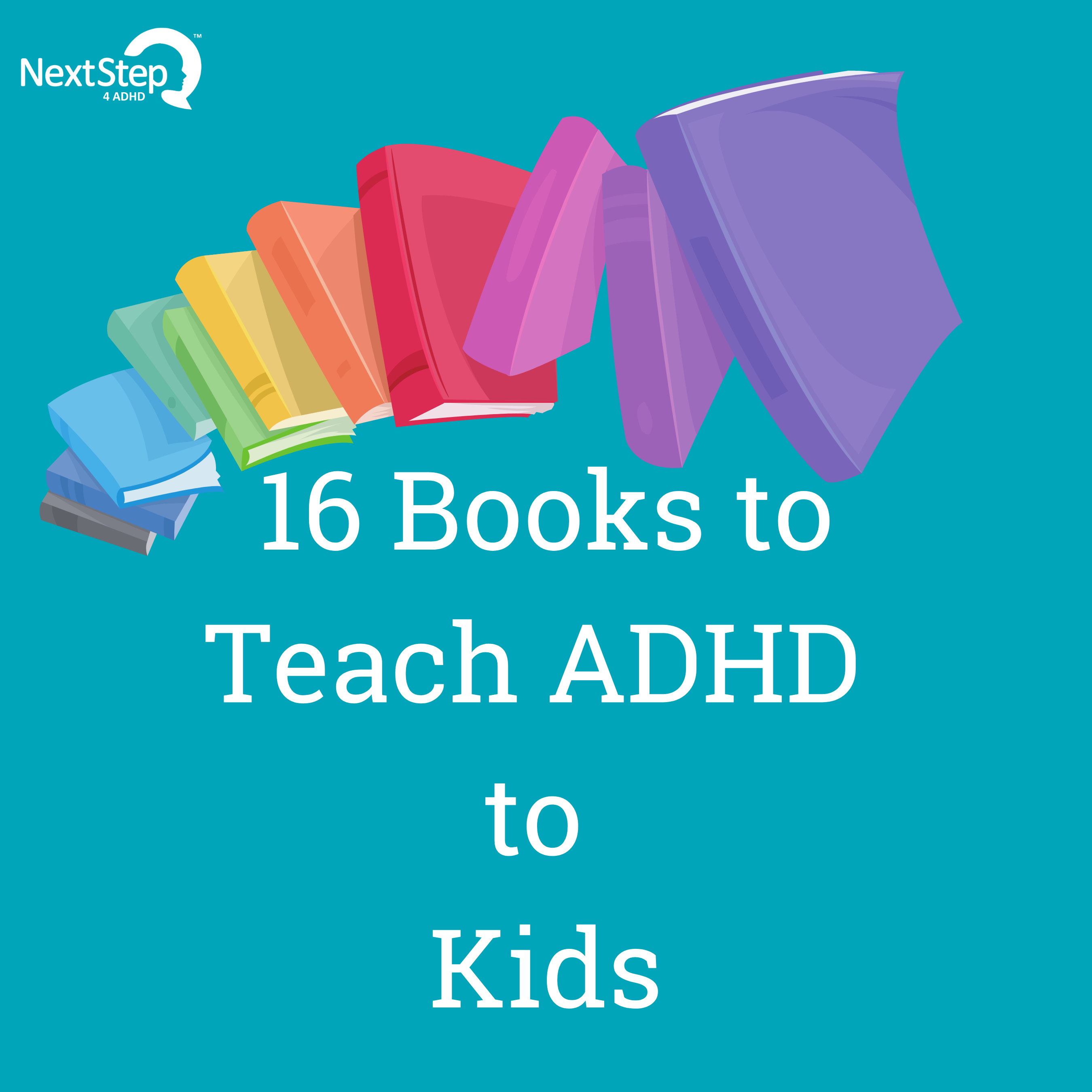
16 Books to Help Kids Understand ADHD
Is your child newly diagnosed with ADHD? Here are 16 books to help your child learn more about ADHD and how to manage the challenges and strengths.
Learn More
What to Do If ADHD Is Impacting Your Child’s Report Card
It’s no surprise that having ADHD can be challenging for adults. There are adults who find it difficult to manage (or event start) projects at work. Other adults may struggle to organize a household budget or calendar system. However, ADHD challenges aren’t limited to adults; children and teens may find that the challenges of ADHD can impact academic performance.
How does ADHD impact grades? Inattention is one of the biggest predictors of academic struggles, according to a study published in the journal Frontiers in Psychology.
If you suspect that ADHD is impacting your child’s academic performance, we recommend that you take your child for an assessment. Getting an accurate diagnosis is the first step in managing ADHD — and improving grades. As a full-service clinic, we offer all that your child needs from the initial diagnosis to medication management to parent coaching to therapy — and more.
In the meantime, we created this guide to help you prepare for conversations about bad grades.
When Your Child’s Report Card Surprises You…

Receiving a surprising report card can be upsetting for you, but keep in mind that your child may be upset too.
If your child comes home with bad grades, you might wonder how to talk about it. Here’s what you can do:
Tip #1: Give It Time
The first thing you want to do is to make sure you do not react in the moment. It’s tempting to want to express your frustration immediately. However, give yourself time to think and reflect.
Tip #2: Schedule a Time to Talk with Your Child
Instead of diving into the conversation about ADHD and grades, schedule it. Consider saying, “Let’s sit down together after dinner and talk about this, okay?”
Scheduling a time to talk gives you time to think and avoid hasty punishments.
Tip #3: Avoid the “I’m Disappointed” Tactic
It’s a classic scene.
A child hands over a report card to his parents, the parents scan the report card, and reply, “I’m really disappointed in you. I expected better grades.” You’ve probably seen this scenario played in TV shows or movies.
But this isn’t necessarily the best response to a bad grade.
Telling your child that you’re disappointed in his or her grades might work as a short-term motivator to bring grades up, but there are a few problems with this method.
- It focuses all of the attention on your feelings
- It encourages kids to work harder and get better grades just to avoid parental disappointment
- It ignores the importance of intrinsic motivation
TIP: We want kids to do better because they want to do better. Doing good in school or improving a bad grade feels good, and this is a good opportunity to teach the value of intrinsic motivation.
So what should you do? Instead of focusing on your feelings, ask your child how she or he feels about the grades. We’ll cover this in the next section.
Tip #4: Plan Your Words & Create a Calm, Warm Atmosphere
Now that you’ve scheduled your talk with your child, what do you say?
Avoid all “you” statements. Instead, try “I noticed that…” . Eliminating “you” statements can alleviate feelings of blame — and this opens the door to a more open, honest conversation.
TRY IT OUT LOUD: “I noticed that your chemistry grade is lower than we both thought it was going to be. Can you help me understand what happened here?”
The above sentence is much more approachable than this one: “You did not do well in chemistry at all. This grade is completely unacceptable.”
WHY IT WORKS: The phrase, “Can you help me understand,” gives your child a chance to explain his thoughts and what potentially contributed to the grade.
Listen to what your child has to say. Depending on your child’s age, she or he might have a lot of feelings about a bad grade. He might feel embarrassed to talk about it. She might feel surprised or confused, especially if she thought she was on track for a better grade.
Keep these tips in mind:
- Take your time. Don’t feel obligated to fill the silence. Let your child think for a few moments.
- Know that your child might say “I don’t know how I feel” and that’s a start. Remember your child or teen may not fully realize how ADHD impacts grades.
- Reassure that you’re not judging — simply trying to get to the root of the problem so you can help.
After your child responds, re-state what he said. Try saying, “It sounds like you’re having a difficult time with chemistry formulas, and it’s making you frustrated.” By stating your child’s feelings, you’ve demonstrated that you’re on his or her team. Plus, you’ve demonstrated a key component of emotional regulation — stating the feeling.
To continue the conversation, ask, “What do you think you need to do to improve your chemistry grade?” This is an important question. It creates a sense of accountability and teaches your child the importance of creating solutions to his or her problems. If your child helps to create the solution, he’s more likely to follow through.
Tip #5: Think Through Punishments and Consequences
It can be tempting to punish a child or teen for a bad report card, but punishments given in the spur of the moment are likely to be severe. Plus, severe punishments don’t necessarily teach the right lessons. But how do you give consequences for bad report cards? Do you punish bad grades? Reward the good grades?
Let’s go back and first explore what punishments are.
In psychology, there are two types of punishments:
- Negative punishments: something is taken away (like video game time) to decrease the unwanted behavior (bad grades)
- Positive punishments: something is added to the situation (like extra chores or even yelling) to decrease the unwanted behavior (bad grades)
There is a downside though. Punishments may work — but for the wrong reasons. For example, a child may work to improve grades to avoid getting yelled at, or getting grounded. This doesn’t teach your child why good behaviors are good and why the unwanted behaviors are bad.
Enter: Positive Discipline
To recap: Punishment describes methods of control, gained by enforcing rules and punishing undesired behavior. On the other hand, positive discipline is “a way of teaching and guiding children by letting them know what behavior is acceptable in a way that is firm, yet kind.” Positive discipline relies on the power of teaching.
In fact, the word discipline literally means “to teach.”
In other words, the consequences of bad report cards should be appropriate. Many parents are tempted to remove kids from sports, but research shows that this isn’t the most efficient solution. Activities like this are good for physical health, but they also boost confidence.
Instead, try linking other privileges (like extra video game time) with academic progress. You can use when/then statements to do this.
Here’s an example:
When your chemistry report is completed thoroughly and with care, then you may play your video game for X minutes.
Tip #6: Comment on the Good Grades, Too
Even if your immediate focus is on a less-than-stellar grade, don’t forget to comment on the good grades too.
- You studied really hard for your English exam, and it paid off.
- I can see that you worked really hard to bring your English grade up. Nicely done!
- Wow, your history grade is impressive. Tell me about your class. What did you enjoy learning?
Bonus: Always focus on progress — not perfection.
Tip #7: Brainstorm Ways to Improve Grades Together
Pam Valdes, a Certified Positive Discipline Parent Educator, weighs in on the topic of ADHD and grades:
“Remind your child that ADHD can make certain tasks more difficult, but emphasize that these are skills that can be learned.”
Pam continues, “Brainstorm ways to improve grades together. You’ll have to find what works for them, and you are there to help. Meet with each of your child’s teachers to obtain details about their school habits. Does the teacher have any ideas of the root of the problem? Are assignments turned in on time? Does your child seem to understand the subject matter? Work with teachers to solve problems and share your plan for working with your child at home.”
Tip #8: Nurture Your Relationship
When it comes to working through any problem (whether that’s bad grades or not), it’s important to continue to nurture your relationship.
Pam shares, “Focus on your relationship with your child. It’s important to have some positive 1:1 time every day. That warm, loving relationship will go a long way in helping them to trust you and be open with you about their school problems.“
Supporting Your Child’s Academic Progress at Home
 Whether your child is learning in a traditional or virtual school setting, you can continue to support your child’s academic career at home. One of the best ways to support your child is to identify any potential obstacles, including untreated or undertreated ADHD. Any child can experience a bad grade here or there, but ADHD symptoms like inattention can make school more challenging.
Whether your child is learning in a traditional or virtual school setting, you can continue to support your child’s academic career at home. One of the best ways to support your child is to identify any potential obstacles, including untreated or undertreated ADHD. Any child can experience a bad grade here or there, but ADHD symptoms like inattention can make school more challenging.
The best way to support your child with ADHD is to make sure that his or her ADHD symptoms are adequately managed. Don’t hesitate to reach out if your child’s treatment plan is no longer working.
There are other things you can do to support your child’s academic success:
- Establish a weekly time to “check in” with your child and talk about school.
- Establish a homework routine and homework station.
- Teach your child to prepare his/her backpack and assignments the night before.
- Brush up on study skills (i.e., setting designated study time, etc.)
- Get organized (together): use charts, folders, planners, binders, etc.
Most importantly, proactive support can help get ahead of the curve. If you help your child manage ADHD, implement solid study skills, and create an effective homework station, then you’re setting your child up for success.
Motivating Your Child to Work on School Work
When it comes to ADHD and grades, increasing motivation goes a long way. Throughout this article, we’ve discussed the importance of intrinsic motivation. This is a helpful skill for kids, but it’ll be useful far into adulthood too.
Explore this article and discover six tips for motivating your child.
Need help motivating your child to complete homework? Enroll in our FREE course, “Motivating Your Child to Work Independently.”
ADHD and Grades: What Can Mental Health Care Providers Do to Help?
ADHD treatment can improve all aspects of your child’s life, including academic success.
Here at Next Step 4 ADHD, we take multidisciplinary and holistic approach to your child’s ADHD treatment. Whether your child needs medication management, therapy, or a combination, we can guide you with your next steps. We also support YOU, which is why we offer parent coaching — to help you discover proven strategies to motivate and encourage children with ADHD.
To make an appointment for ADHD treatment, call us at 502-907-5908. You can also schedule a FREE 20-minute coaching consult to see if coaching is right for you.
Learn More
6 Ways to Motivate Your Child
Whether you’re trying to encourage your child to complete homework (or e-learning assignments) or chores, there’s one truth: motivating your child can be tough.
As a parent, you might suspect that ADHD can interfere with your child’s ability to self-motivate — and you’d be correct. ADHD can impact your child’s executive function skills, which leads to poor time management, lack of motivation, etc.
If you’re struggling to get your child to work independently, keep reading. In this article, we’ll explore six ways to motivate your child.
1. Set Clear Expectations
One of the biggest sources of parent-child arguments is a breakdown in communication. It’s difficult (if not impossible) for a child to feel motivated to complete a task if he doesn’t fully understand the scope of what is being asked.
To set clear expectations, keep these tips in mind:
- Use language that your child is already familiar with
- Always explain tasks when you have your child’s full attention (e.g., turn off radio, tv, etc)
- Be as specific as possible (instead “do your chores” say “please sweep the kitchen floor and then take the trash outside”)
It’s also important to set time expectations too. If a child thinks he has unlimited hours to complete a task, it’s harder to get started. For example, saying “please finish reading your chapter by 6pm so we can go for a walk together” gives a specific time goal — and that helps with motivation too.
2. Make Sure Your Child Understands the Task at Hand
The next key to instilling motivation is to help your child accept responsibility for the task.
You can do this in a few ways:
- Have your child re-state your requests (this also lets you know if your child was paying attention to you)
- Keep a chore chart posted in the kitchen
- Have your child write his homework assignments on his schedule or daily planner
Sometimes children struggle with motivation if they don’t know what to do. For example, if you are asking your child to perform a new chore, demonstrate what you expect first. Show him how to sweep or put fresh sheets on the bed.
This step is key to avoiding the “But I didn’t know I had to do X, Y, Z” arguments.
3. Use Positive Reinforcement
Positive reinforcement can be a good motivator for a child with ADHD. In psychology, positive reinforcement refers to the introduction of a desirable or pleasant stimulus after a behavior. The stimulus is something that reinforces the desired behavior.
Here’s how it works:
In other words, positive reinforcement is something good (ie the stimulus) we give our child after they execute a behavior.
Examples of positive reinforcements include:
- Smiles
- Attention
- Words of encouragement
- Praise for effort e.g., “You worked hard cleaning up your toys!”
Positive reinforcement doesn’t have to be tangible like a sticker — but it could be. Positive reinforcements (whether it’s a smile or a cheerful word of encouragement) help your child develop internal motivation to get tasks done, whether that’s doing homework or completing a daily chore.
4. Stay Consistent with Consequences
Children with ADHD thrive with consistency. Whether you’re creating a schedule or determining consequences for not getting work done, consistency is key.
You can establish consistency by:
Setting household rules
Household rules should be established ahead of time. This way, when issues arise, you’re not caught trying to determine consequences on the spot. In a way, the household rules are the “enforcer” — you’re not the bad guy.
What does this look like? If your child didn’t finish homework, you might refer to the rules and say something like “Oh, Johnny. You won’t be able to play your video game after dinner because you didn’t get your homework done before we ate. That’s one of our rules.”
Why it works: in the future, the thought of a consequence might help motivate Johnny to get his homework done in a timely manner.
Consequences don’t need to be big or extravagant, but you do need to stay consistent.
Explore natural consequences
Another type of consequence is a natural consequence. These are consequences that occur naturally as a result of your child not getting something done.
Natural consequences teach their own lessons. For example, if your child turns in a late assignment, he’ll lose points. Or, if your child missed the bus, he might need to walk to school. Natural consequences are good teachers — when used within reason.
5. Track Your Child’s Progress
A child with ADHD might feel overwhelmed with a project or task before even starting. And that make it hard to get motivated.
To help motivate your child, teach your child how to break a big project into several smaller steps. Track the progress of each step, instead of just looking at the big picture.
Let’s look at a few examples:
Cleaning the bedroom
- Ask your child to write down a list of everything that needs to get tidied. You might include things like “make bed” or “put away clean clothes” or “vacuum” or “pick up Legos”.
- When your child completes a task, have him cross it off the list
Now, the chore seems much more manageable.
Doing homework
- Have your child take out his assignment notebook
- Focus on just one subject at a time
- Cross off each assignment as it’s completed
Now, it’s easier to get motivated to finish homework when it’s just one subject at a time.
6. Invest Your Time
Even though you’re asking your child to finish his homework or start her chores, you may find that you’re spending a lot of your time devoted to motivating your child. And that’s okay. You’re helping to teach your child strategies that will carry into adulthood.
Eventually, you won’t need to provide as much guidance, but the repetition and the consistency will help your child — one step at a time.
Remember: Start with the little things, and gradually build up.
Explore Our Free Course on Motivating Your Child
This free course is a must-have for parents who need a little help encouraging their children to work on homework independently. You can apply some of these strategies when you’re encouraging your child to complete his or her chores too.
Need More Guidance?
Here at Next Step 4 ADHD, we take multidisciplinary and holistic approach to your child’s ADHD treatment.Whether your child needs medication management, therapy, or a combination, we can guide you with your next steps. We also offer parent coaching, to help you discover proven strategies to motivate and encourage children with ADHD.
To make an appointment, call us at 502-907-5908.
Learn More
5 Signs that ADHD Is Impacting Your Child’s School Performance
Is ADHD affecting your child’s school performance?
1. Your Child Needs to Move All the Time
2. Classroom Distractions Make It Harder to Focus
3. Your Child Struggles to Get His Thoughts onto Paper
4. Your Child Misses Due Dates
5. Your Child Complains about School
Plus, what you can do to support your child.
